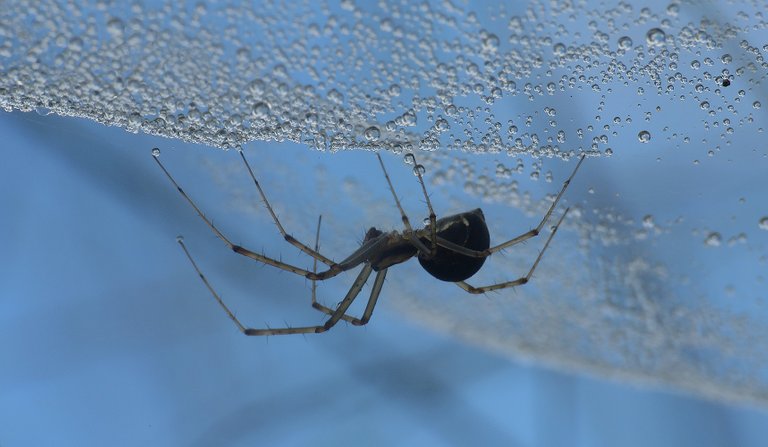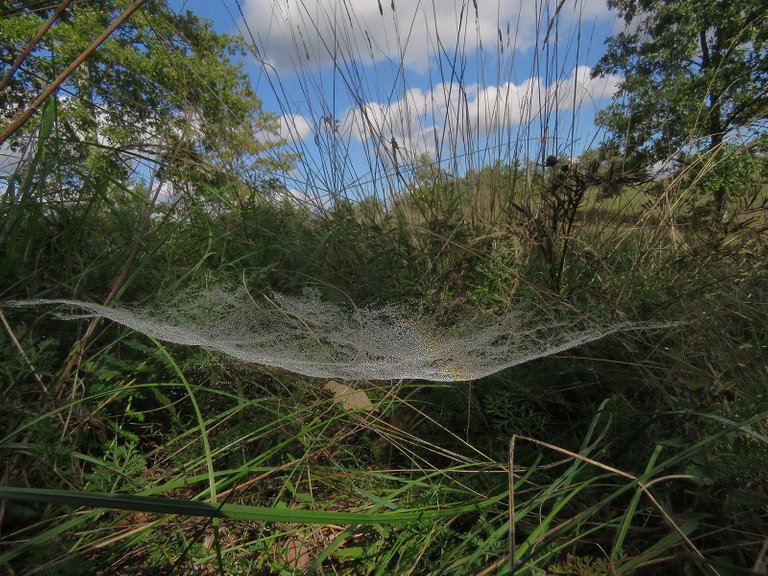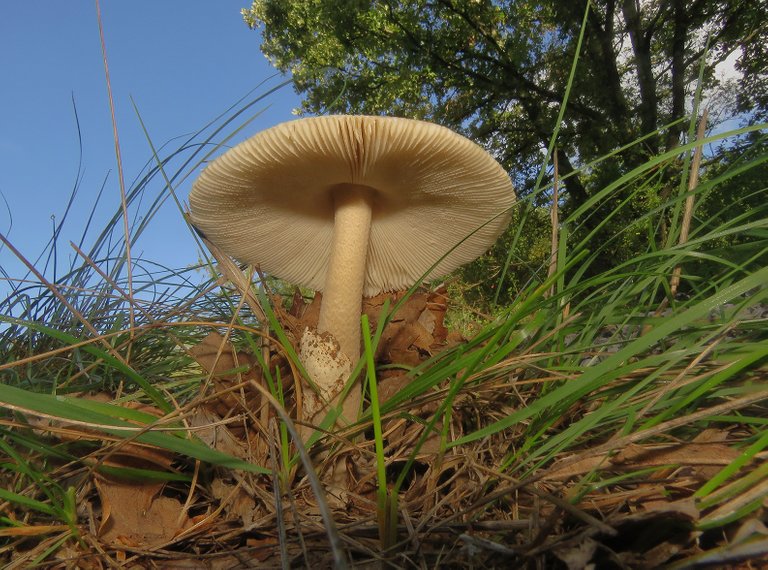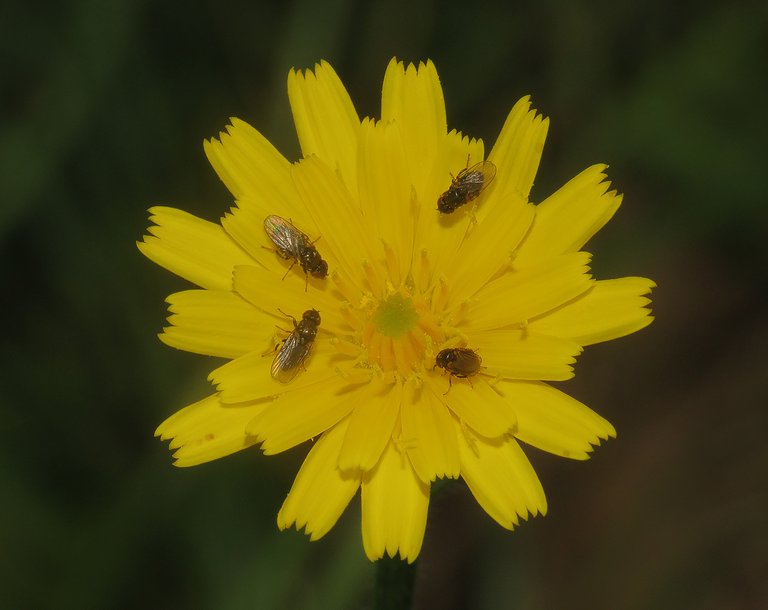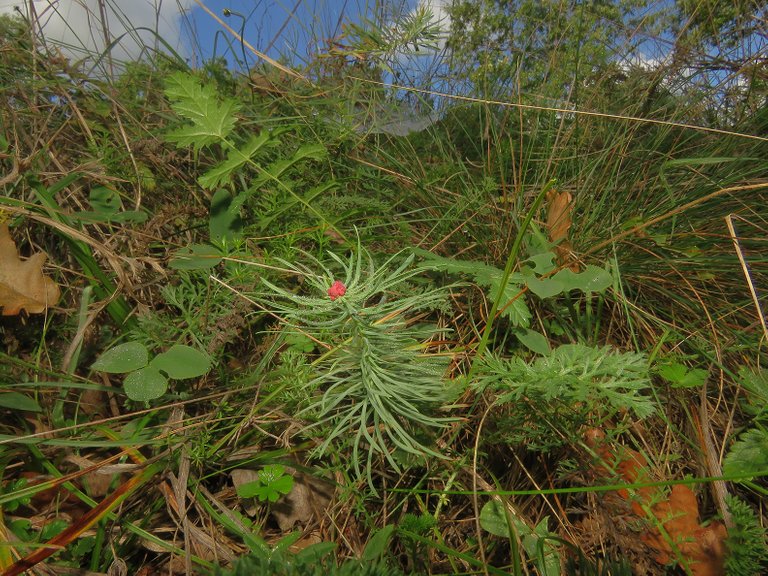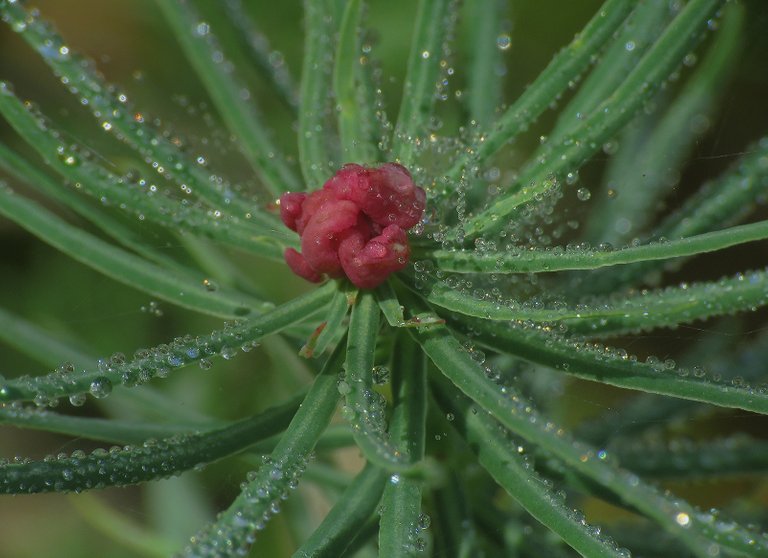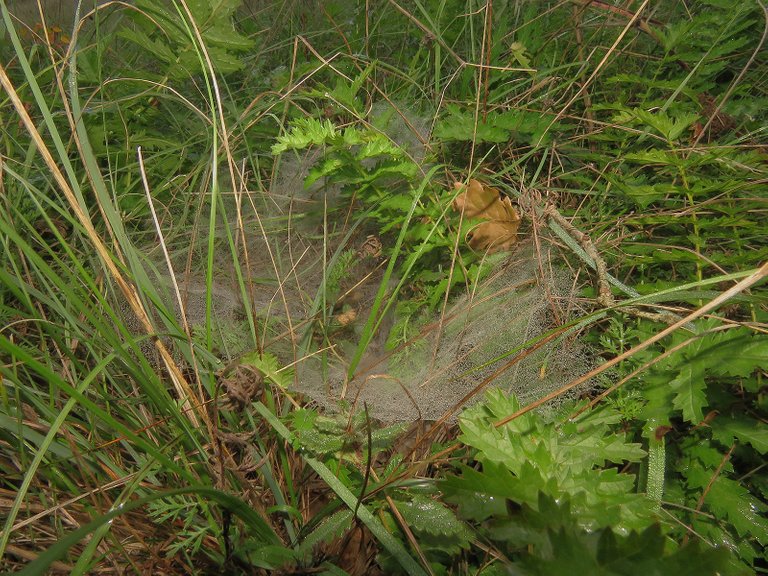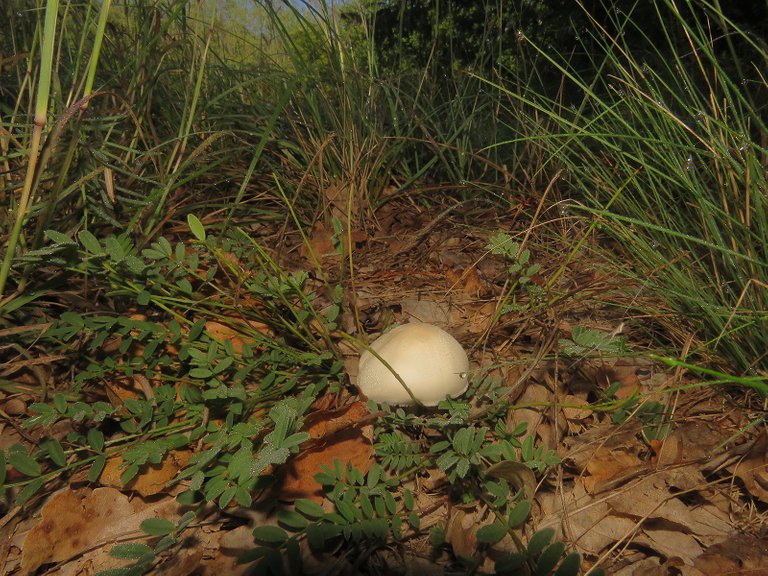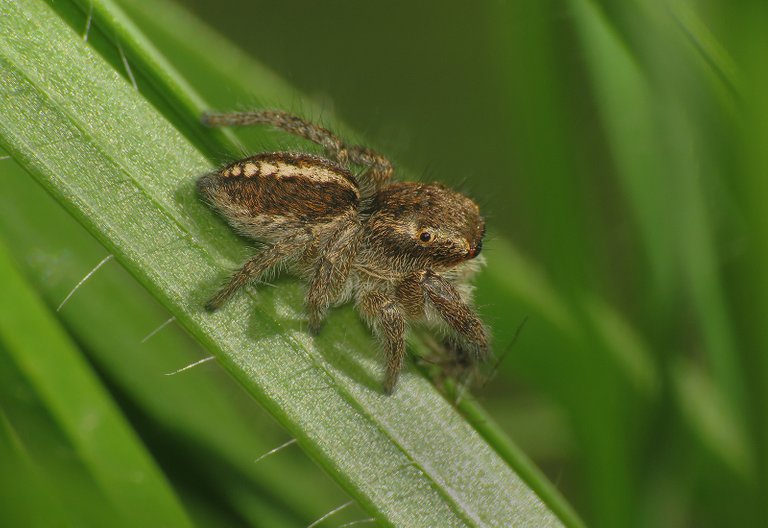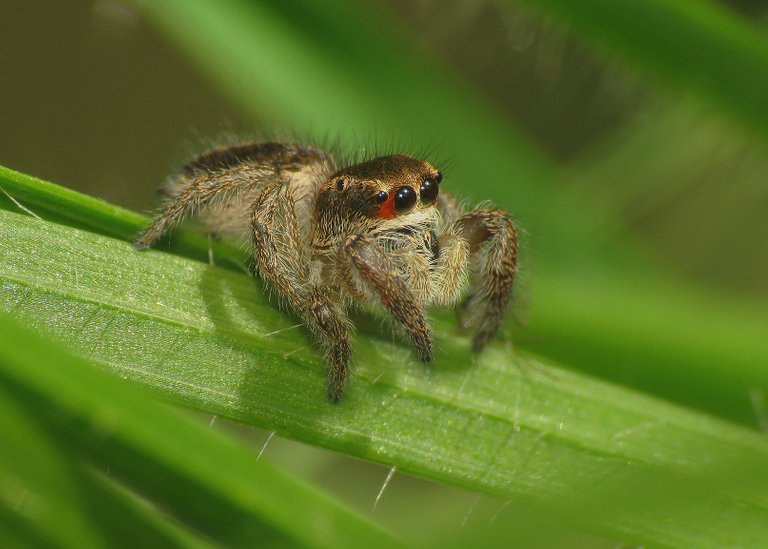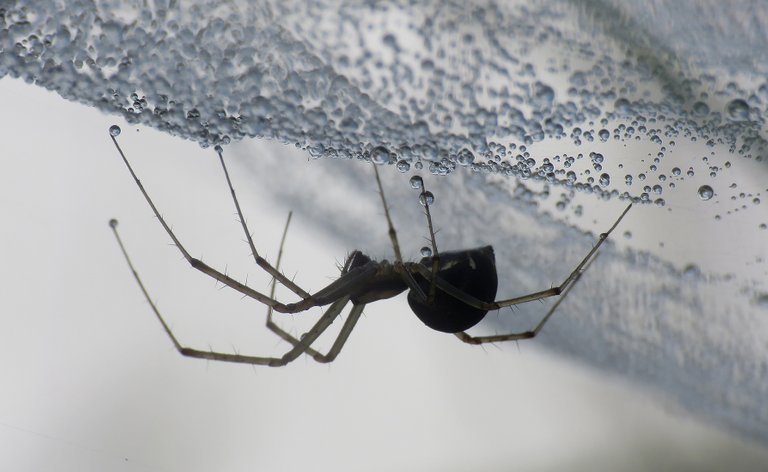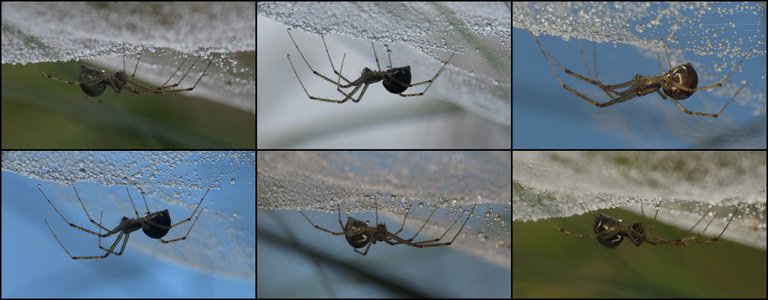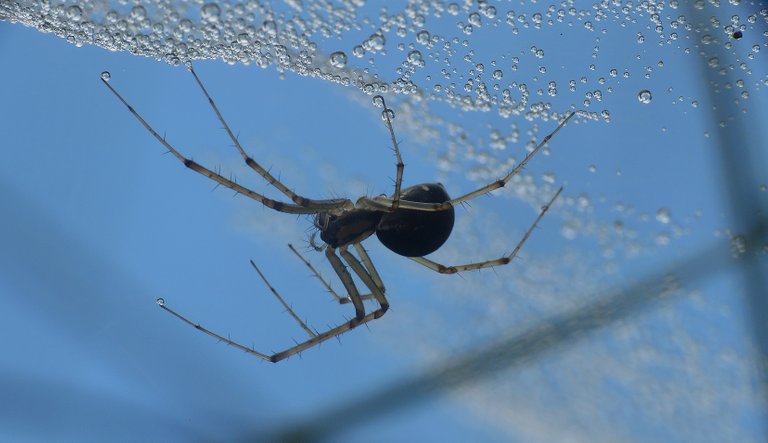Early morning in the rural area between two small inland towns, Barban and Zminj, back then on the 5th of October this year was relatively warm and definitively humid. I spent a couple of hours on the dew-covered meadows, busy searching for scenes that nature has to offer in early autumn.
In this opening photograph, you can see one of the highlights of that photo session. A spider hanging on the pretty large horizontal web decorated with droplets that look like minuscule pearls.
In this wide shot, you can see the entire web. And also a bit of the scenery behind it.
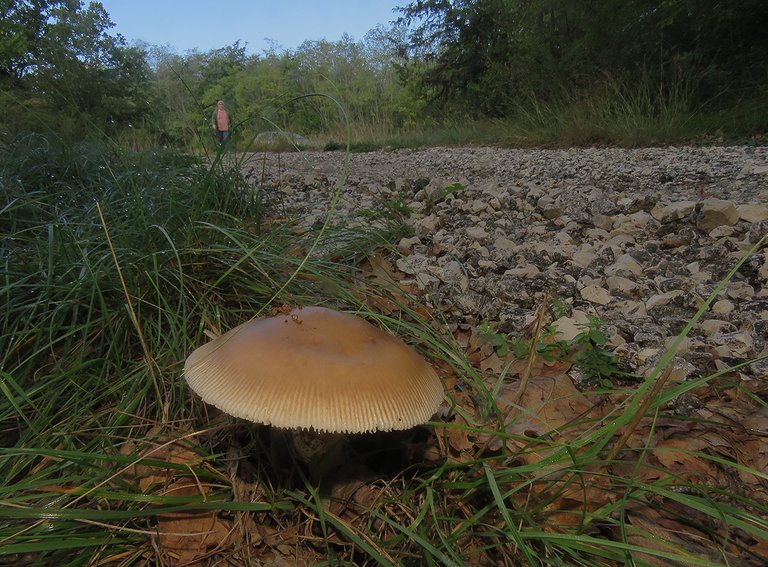
The weather was great for mushrooms, so I found a couple of species along the way. Here you can see the Amanita crocea.
This is the same mushroom. Different angle reveals the gills under the cap and the remains of the egg-like structure called volva from which the mushroom develops into the parasol-like fruiting body shown in this photograph.
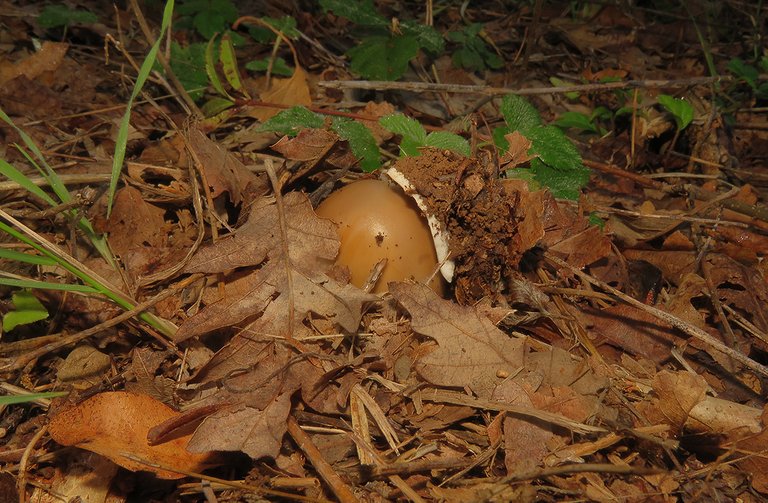
Five or six meters further, I found a much younger fruiting body of the same kind.
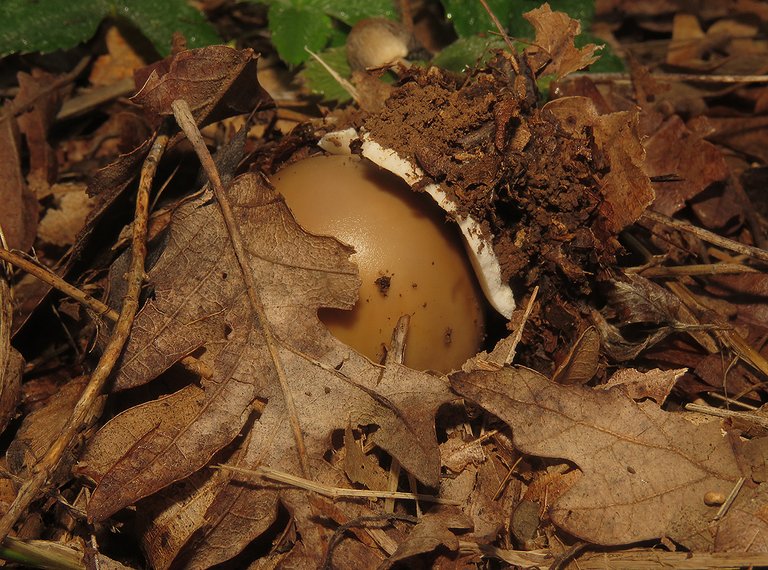
In this case, the volva has just been broken and the cap still looks like an egg.
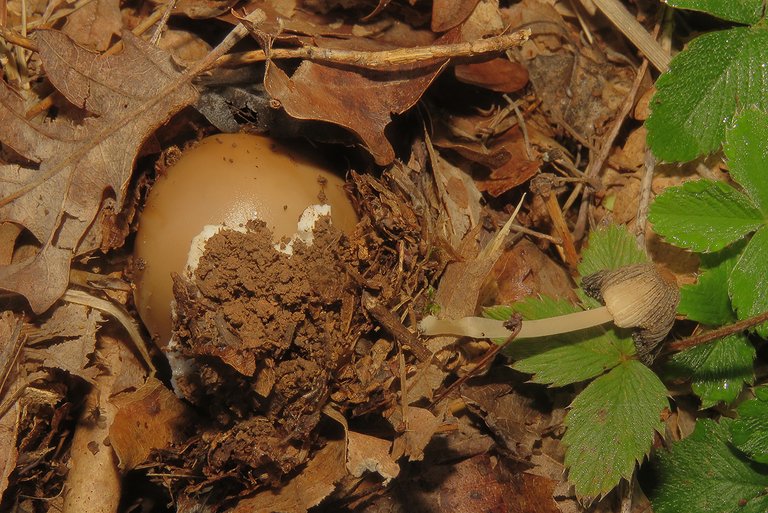
This shot, taken from a slightly different angle, shows another, much smaller mushroom near the young Amanita.
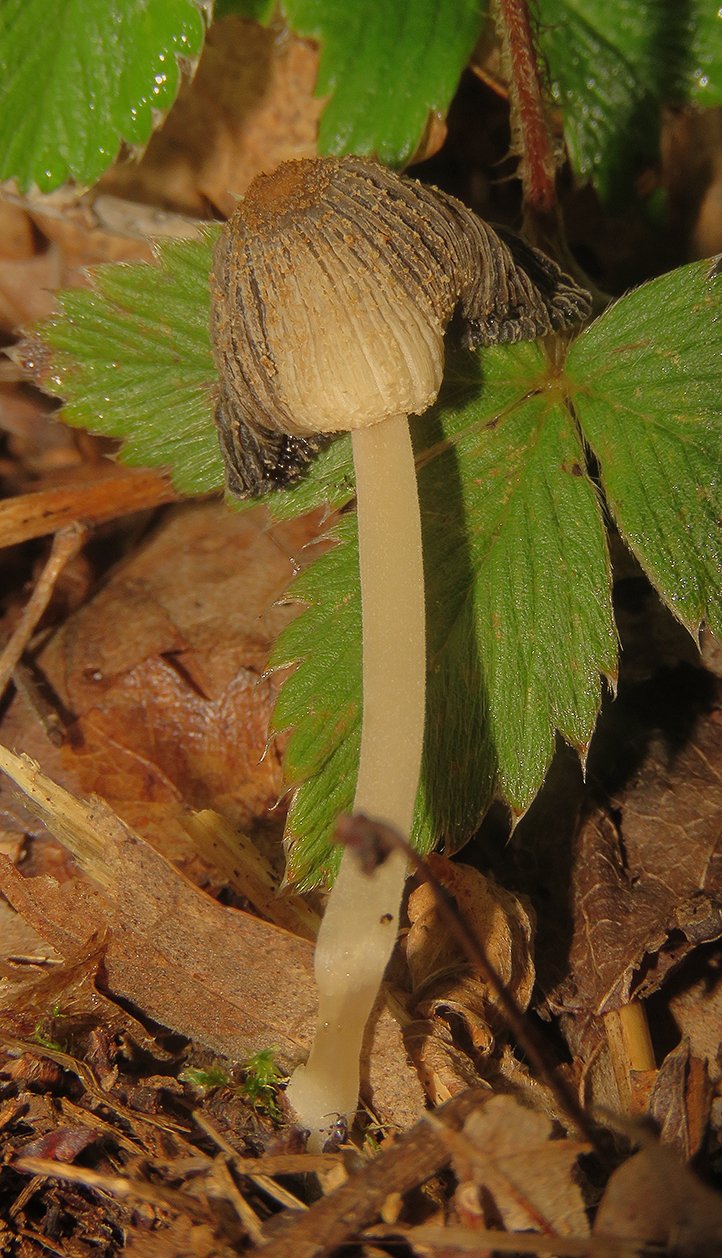
This is the Coprinellus micaceus. A withered, decaying Coprinellus micaceus inkcap. In the following photograph ...
... you can see the yellow Hypochaeris radicata flower and a bunch of flies on it.
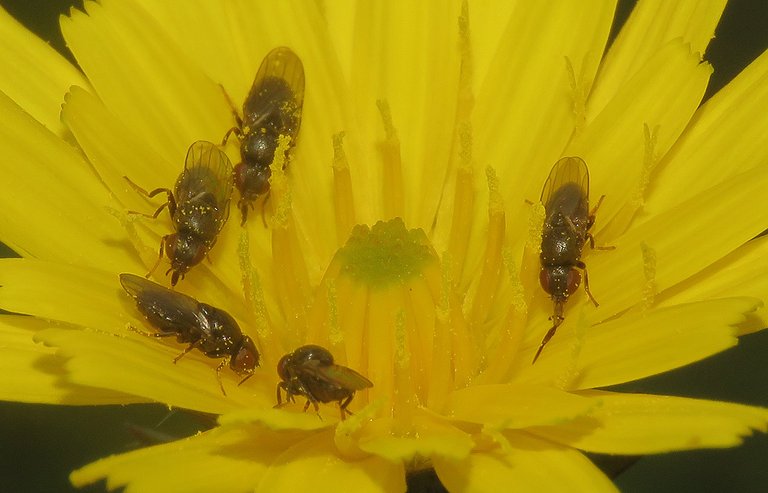
There isn't much I can tell you about these small dark flies.
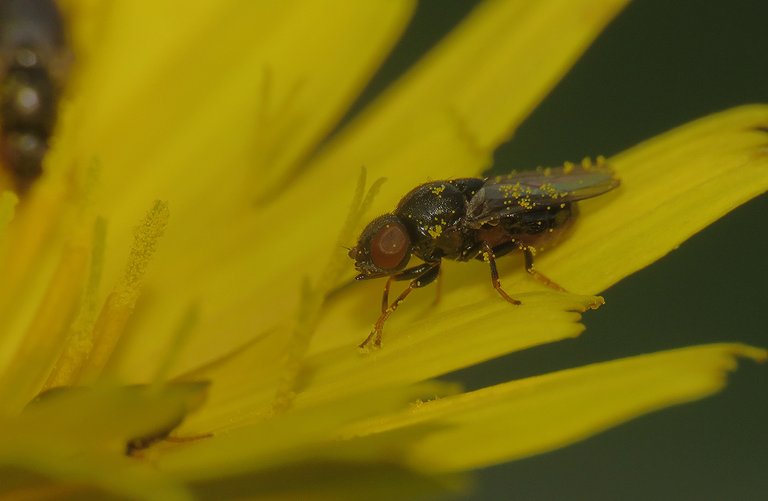
Can't tell you the name of the species. Can't tell you the name of the family. I can only show you what I saw.
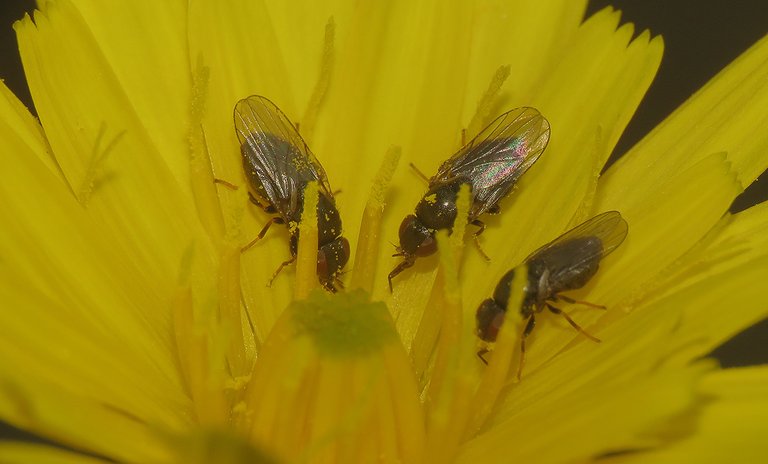
Here you can see them enjoying the nectar. Now you can at least learn something about their diet.

This fly, photographed on the same flower, is much smaller ...
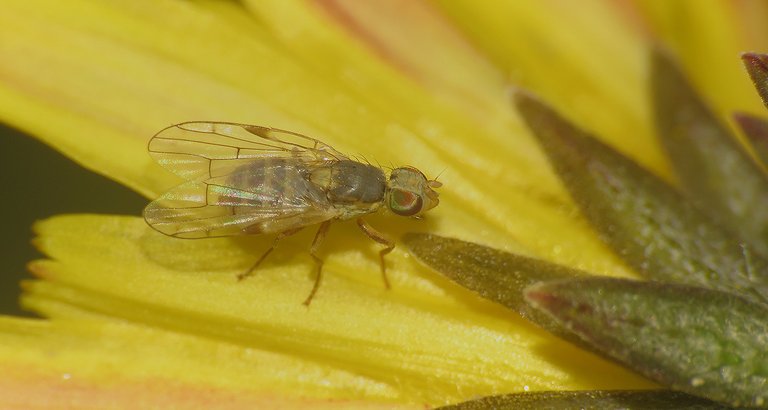
... and just like before ...
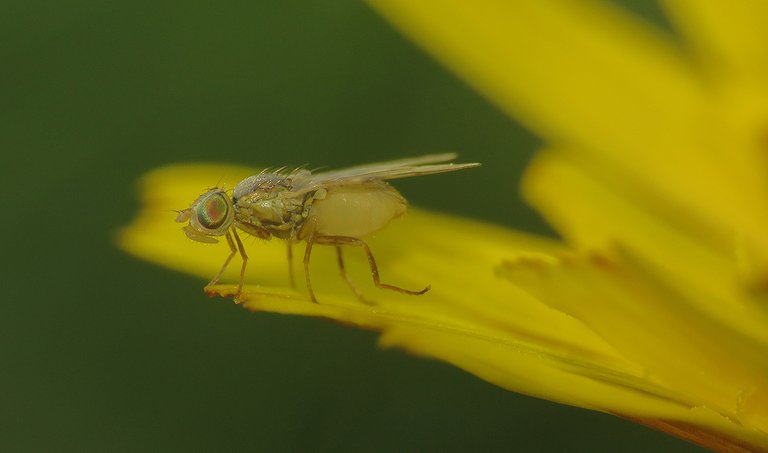
... I can't tell you the name or anything else about this species.
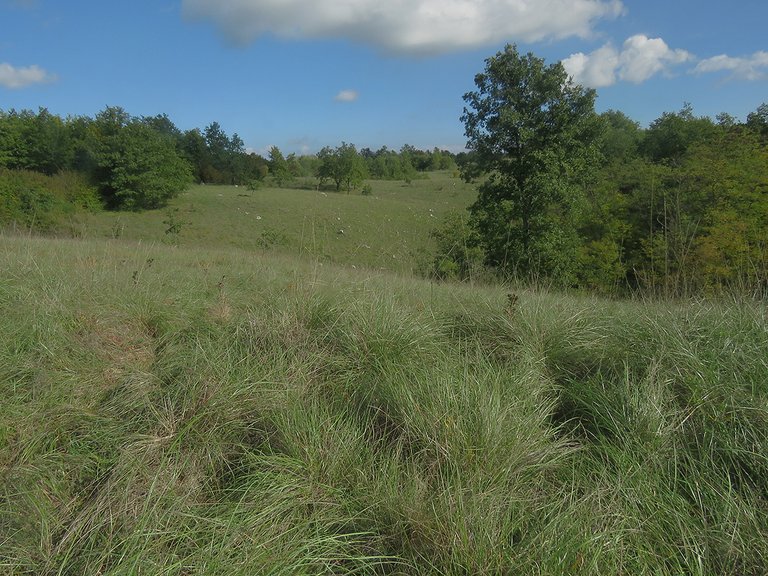
Here, by taking a look at the scenery, you can also take a break from the macro view.
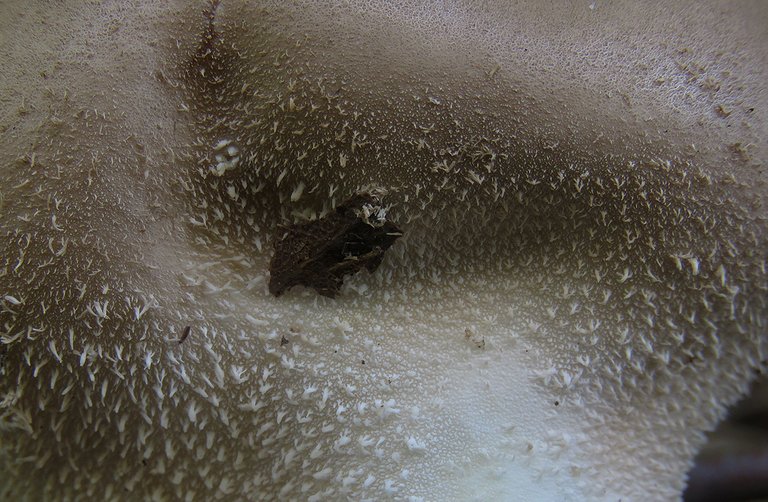
This is a detail of a mushroom seen through the macro lens. To get the following photograph ...

... I removed that lens and zoomed out a bit so you can see the entire fruiting body. This a puffball mushroom. The Lycoperdon perlatum. A relatively old fruiting body that will soon produce the spores.
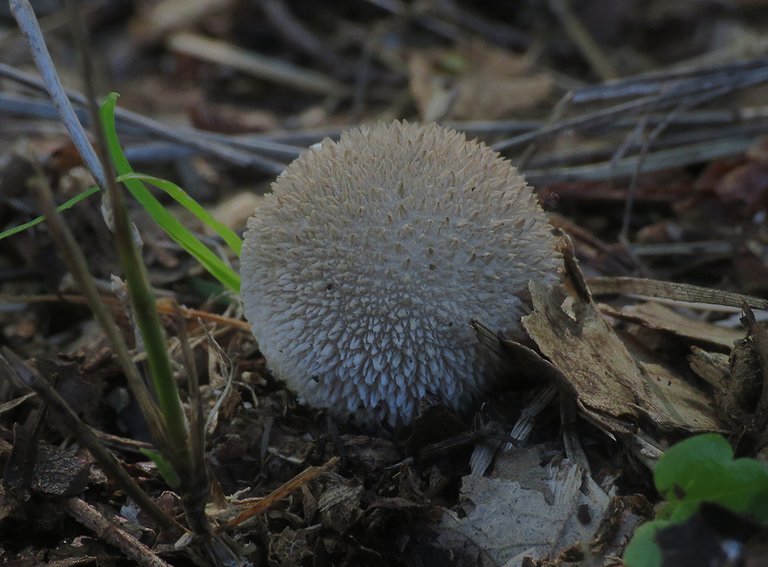
In the same area, just a meter or two from the previous puffball, I photographed this early stage of the Lycoperdon perlatum fruiting body.
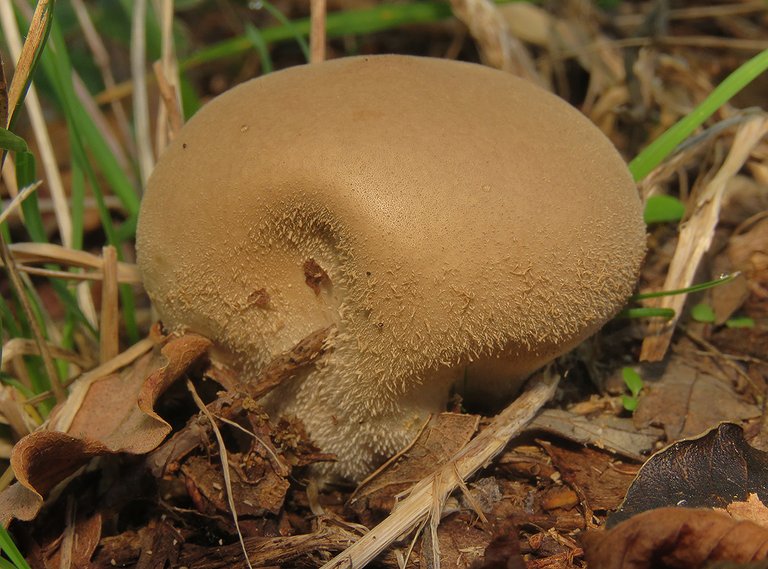
Here you can see another old puffball of the same kind.
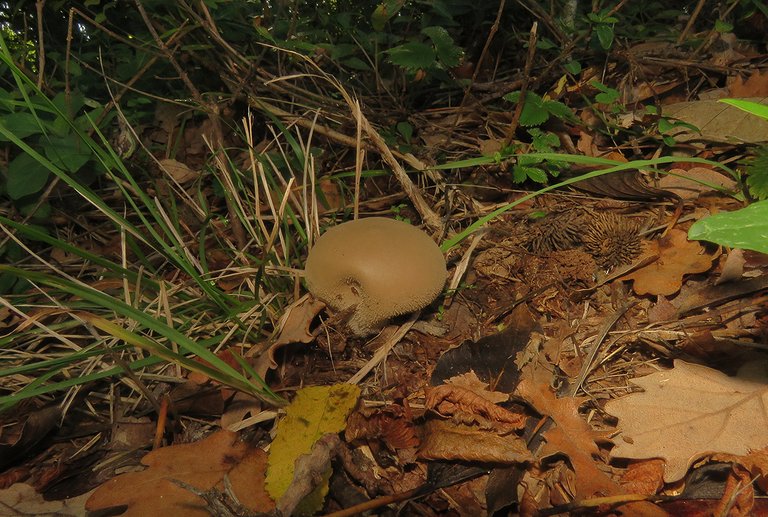
On the leaf litter around the mushroom ...
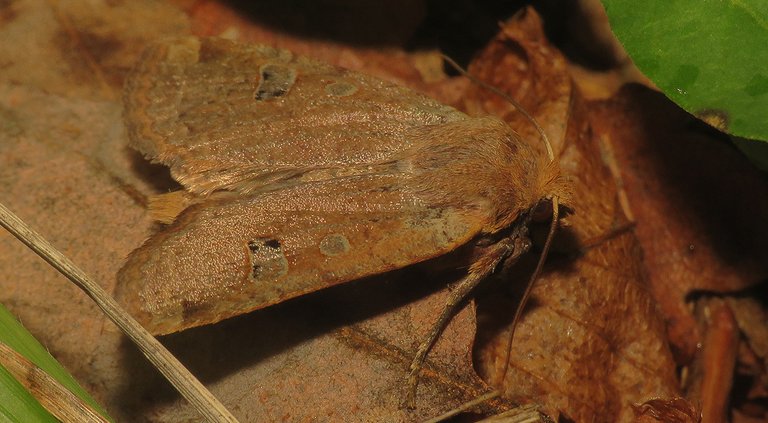
... I found a well-camouflaged moth. The family is definitively Noctuidae, but when it comes to the name of the species, I'm not sure because quite a few very similar-looking moths from that family can be seen in the area.
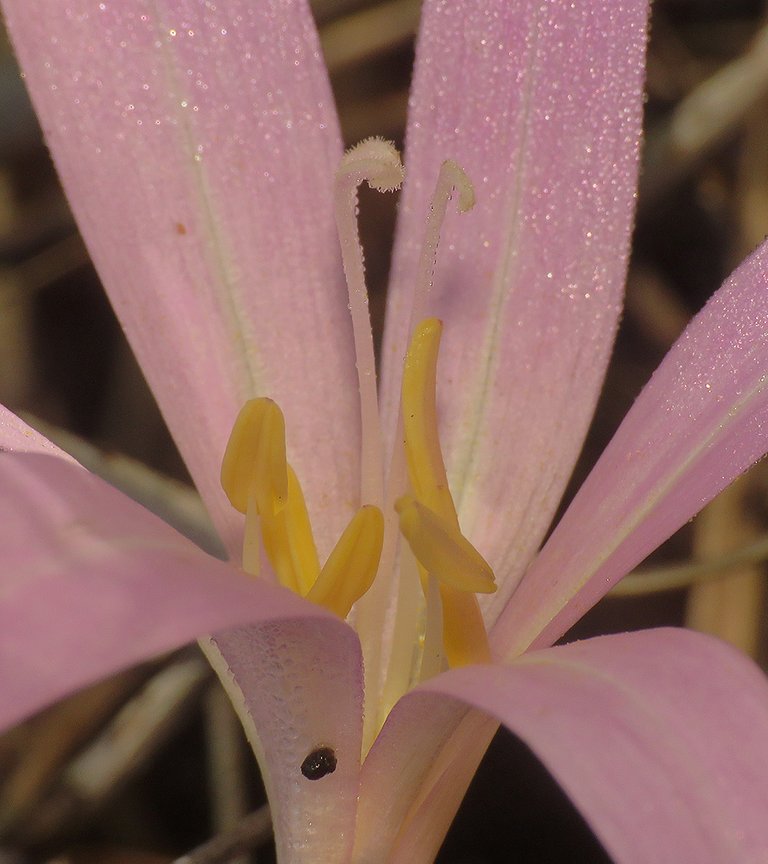
Not far from the puffballs, I also found this lovely flower ...
... the Colchicum autumnale, and then, not far from the flower ...
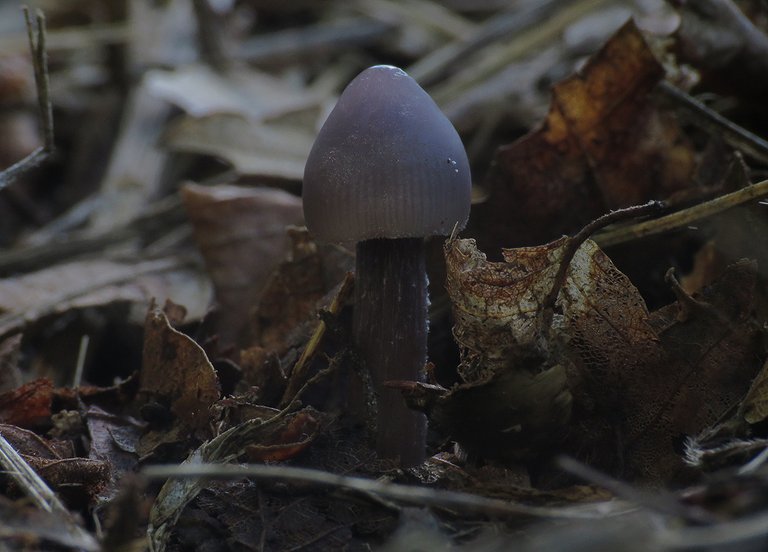
... I photographed another interesting mushroom.
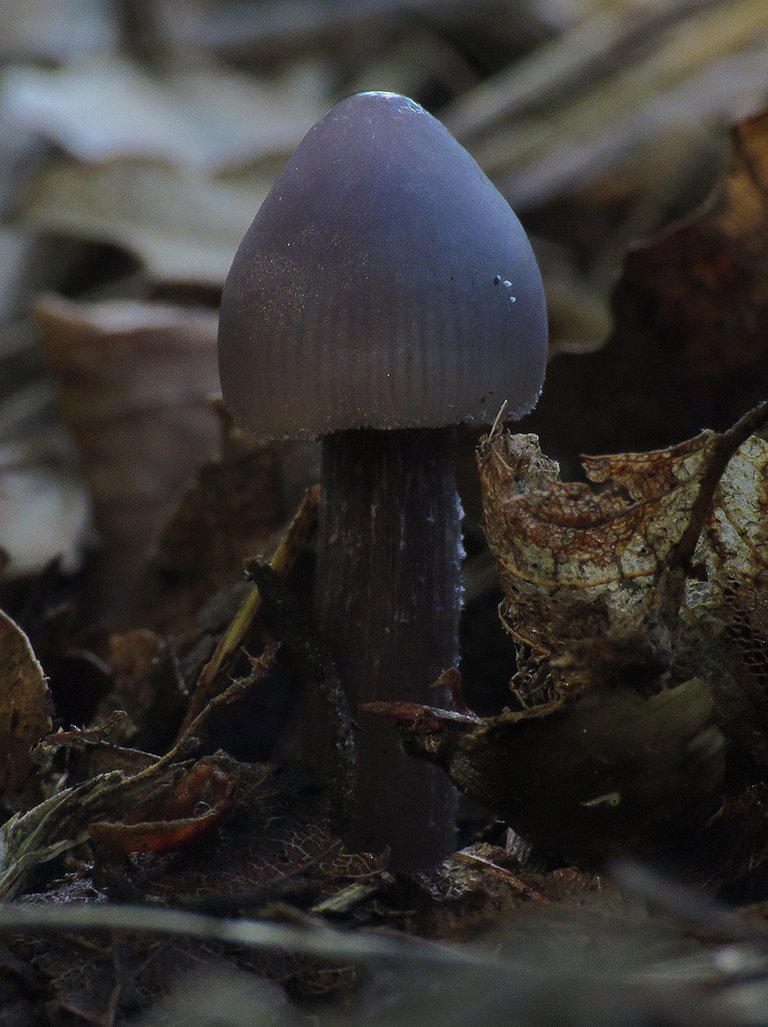
This is probably the Mycena pura, but I'm not completely sure about that.
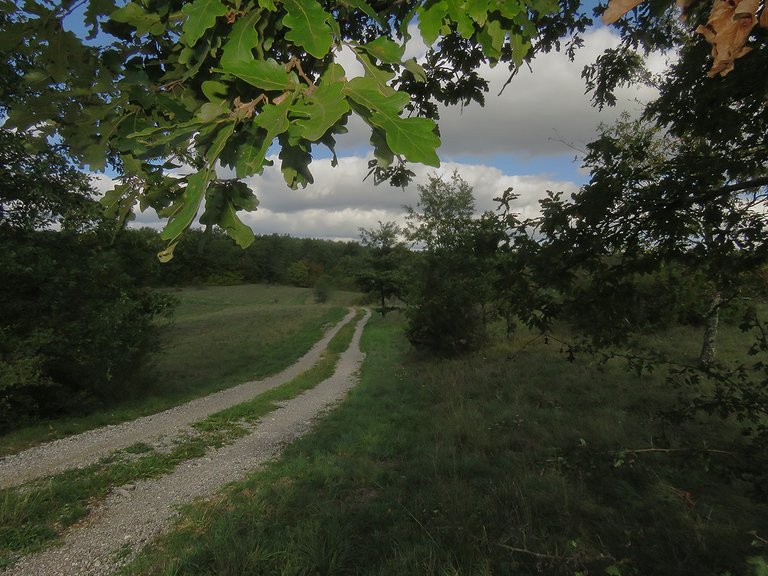
Here you can take another short break from the macro & close-up view and see the path that leads through the oak groves and meadows.
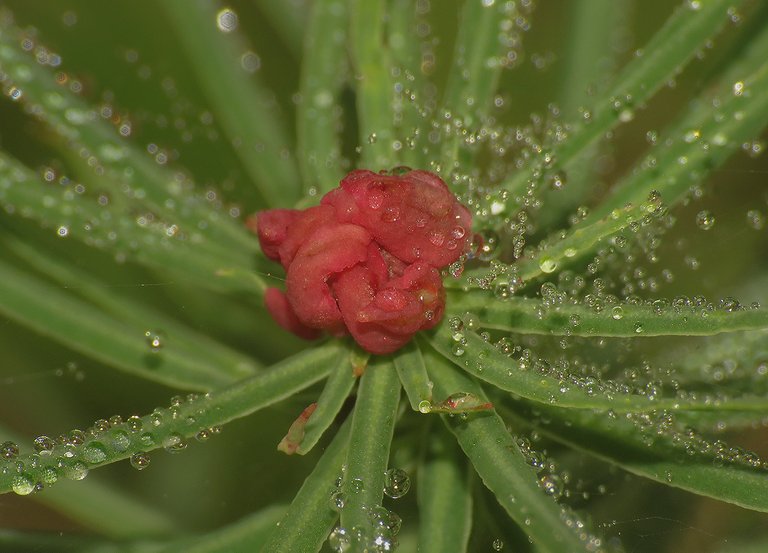
This beautiful red bud ...
... is part of the Euphorbia cyparissias spurge.
Can't tell you what exactly will develop from this colorful thing on the top of the stem. Flowers? More foliage? Something else? I don't know.
Here you can see the pretty large horizontal web ...
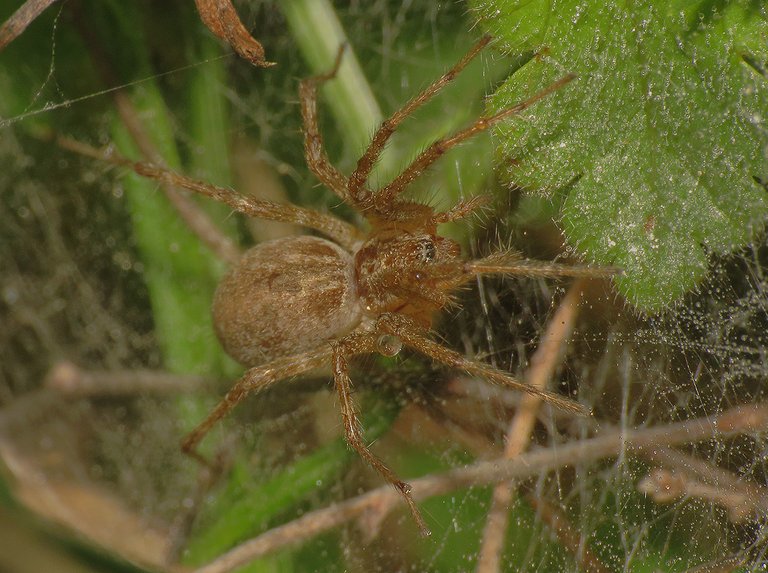
... built by the Allagelena gracilens, a spider from the Agelenidae family.

Near the edge of the web ...
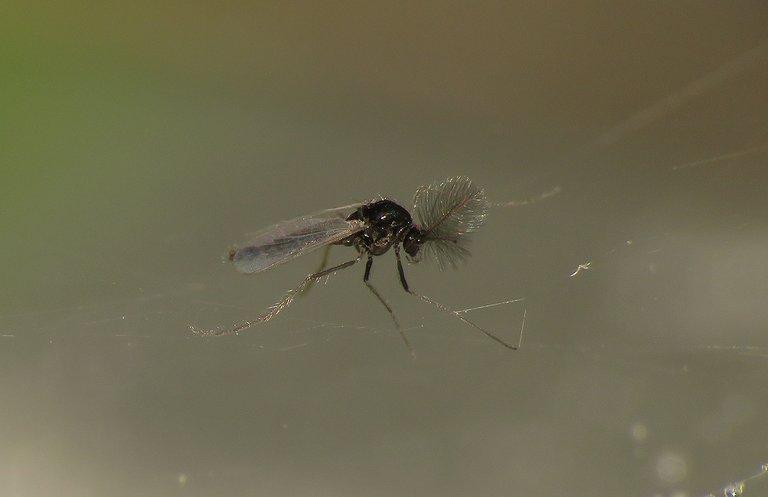
... a very small midge from the Chironomidae family was resting on the threads. The webs built by the Allagelena gracilens aren't sticky.
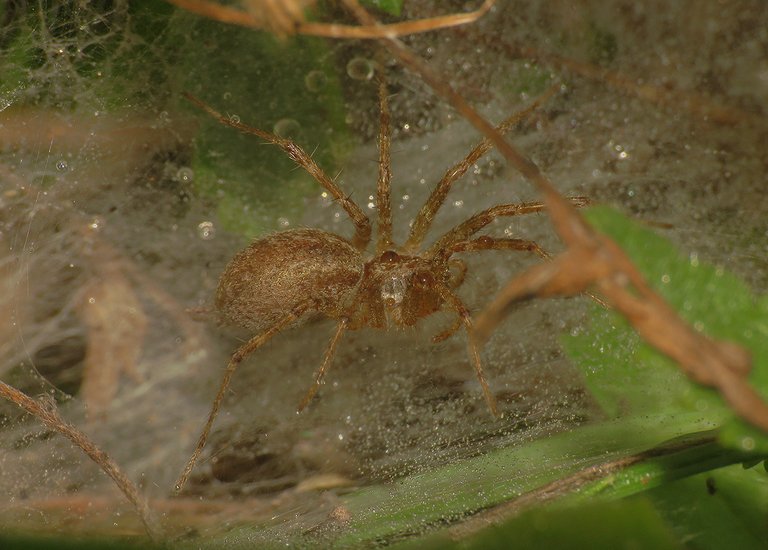
Although not sticky, the structure is full of entangling filaments that can stop or slow down bigger insects that try to pass across the sheet web, so that Allagelena gracilens can capture them easily. Furthermore, the spider uses the web as a surface that transmits every slight vibration to its sensitive legs.
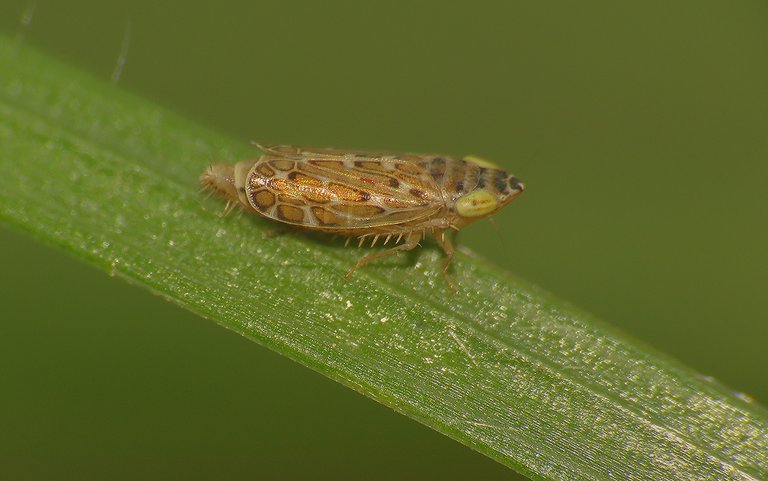
This leafhopper, the Adarrus multinotatus, was resting on the blade of grass above the web.
Here you can see the Agaricus arvensis mushroom that grew in the shade of a small oak tree. In the following photograph ...
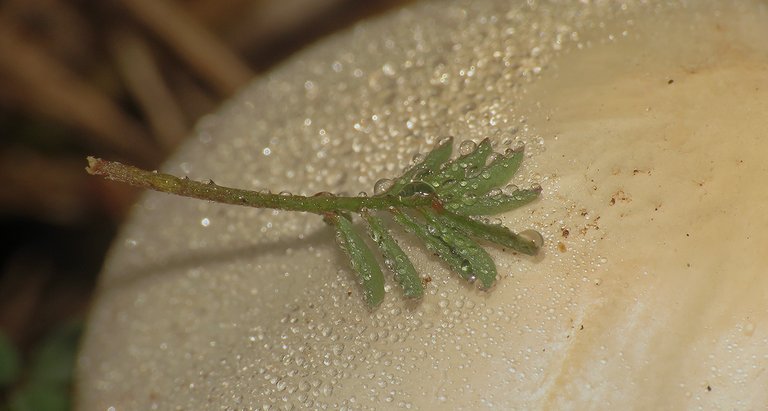
... the focus is on the fragment of the surrounding vegetation that somehow ended up attached to the top of the cap.
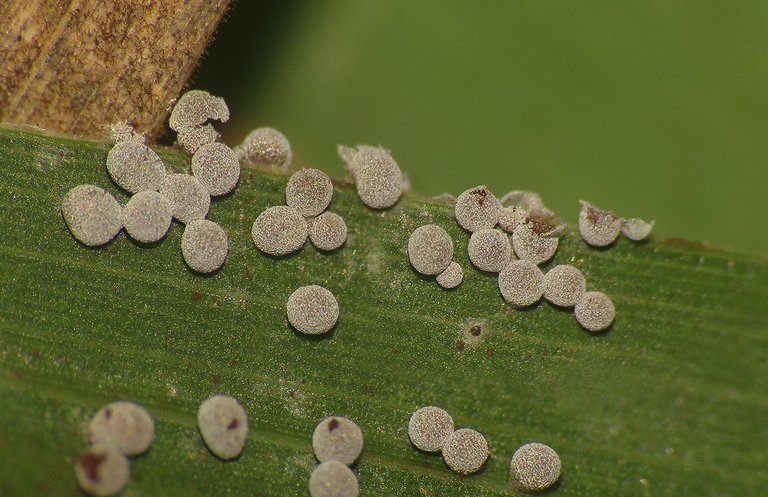
On the grass around the mushroom, I found these minuscule things that I wasn't able to identify. The little spheres look like the eggs of an insect or some other small arthropod. Or some kind of fungal growth. I don't know. Can't tell you what is this exactly.
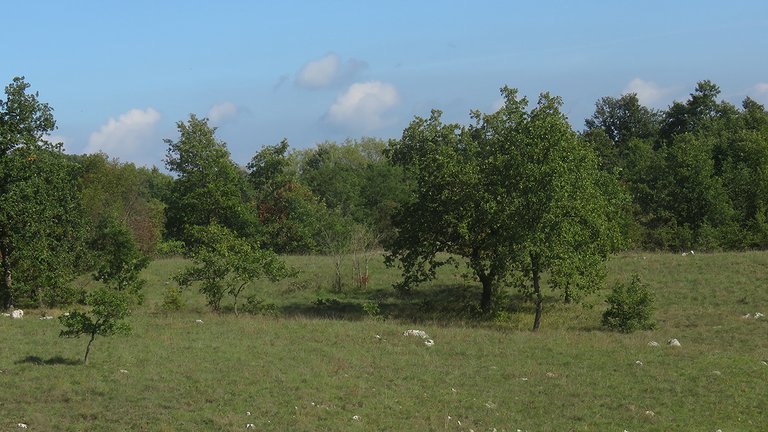
A bit later, while rambling around the meadow and observing the scenery ...
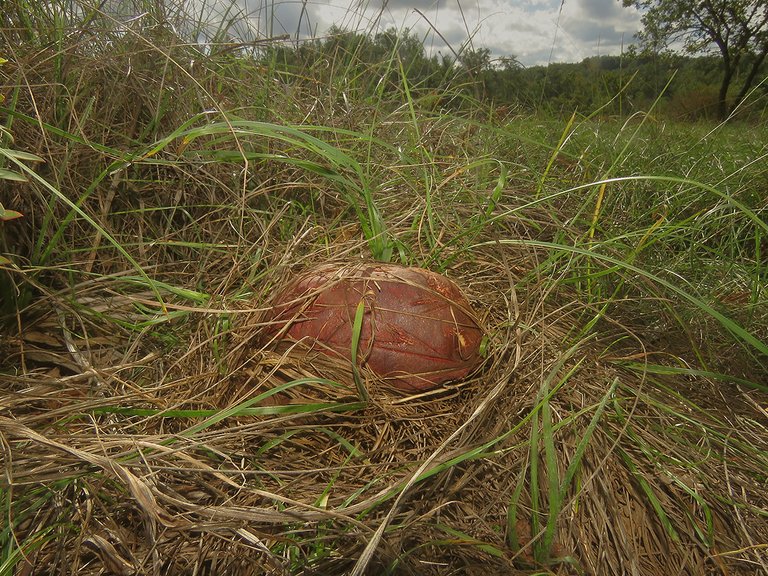
... I came across the old, decaying Neoboletus luridiformis mushroom partially hidden by the grass.
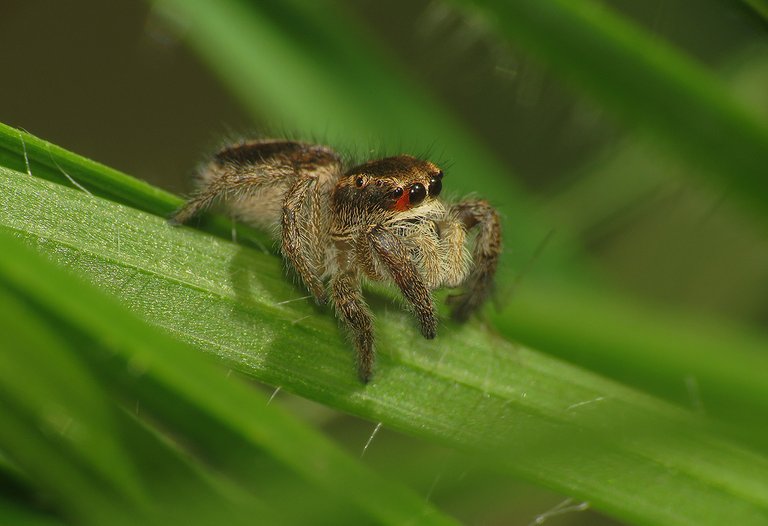
This jumping spider, the Pellenes seriatus ...
... was found and photographed in the grass around the mushroom.
This is a female. Males look considerably different. The spider shown in the following photograph ...
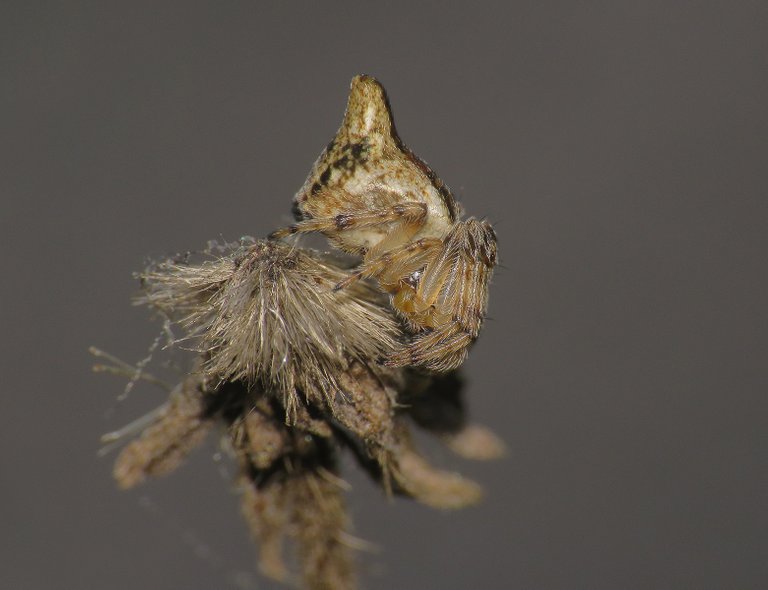
... the Cyclosa conica from the Araneidae family, was hidden in plain sight on the top of some dried-out herbaceous plant.
Here you can take another look at the spider that started this post.
The Linyphia triangularis. A species from the Linyphiidae family.
The horizontal sheet webs of Linyphia triangularis are very large when compared with the small size of the spider. As you can see in these photographs, Linyphia triangularis spends most of its time hanging on the underside of the large web where it waits for the prey.
And that's it. The species that started the post, will now finish it.
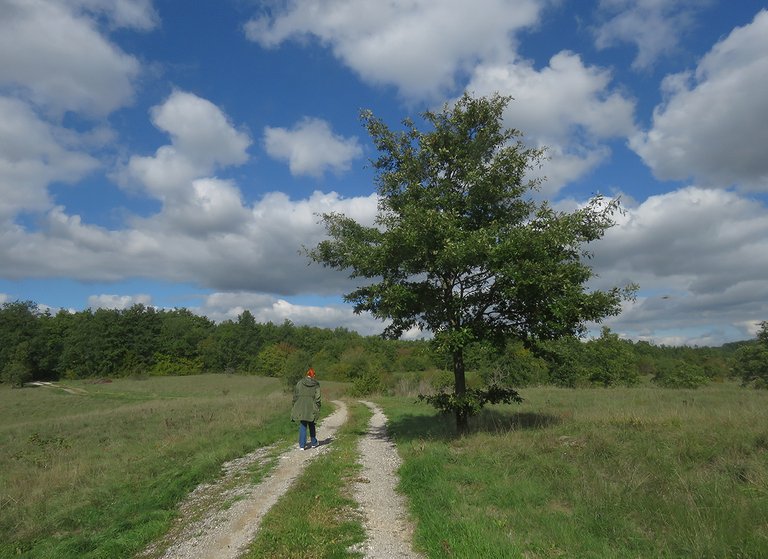
The following links will take you to the sites with more information about some of the protagonists of this post. I found some stuff about them there.
https://en.wikipedia.org/wiki/Linyphia_triangularis
https://en.wikipedia.org/wiki/Amanita_crocea
https://en.wikipedia.org/wiki/Hypochaeris_radicata
https://en.wikipedia.org/wiki/Lycoperdon_perlatum
https://www.leps.it/
https://hirc.botanic.hr/fcd/DetaljiFrame.aspx?IdVrste=3087
https://www.biolib.cz/en/image/id339791/
https://truehopperswp.com/species/adarrus-multinotatus
AS ALWAYS HERE ON HIVE, THE PHOTOGRAPHS ARE MY WORK.
